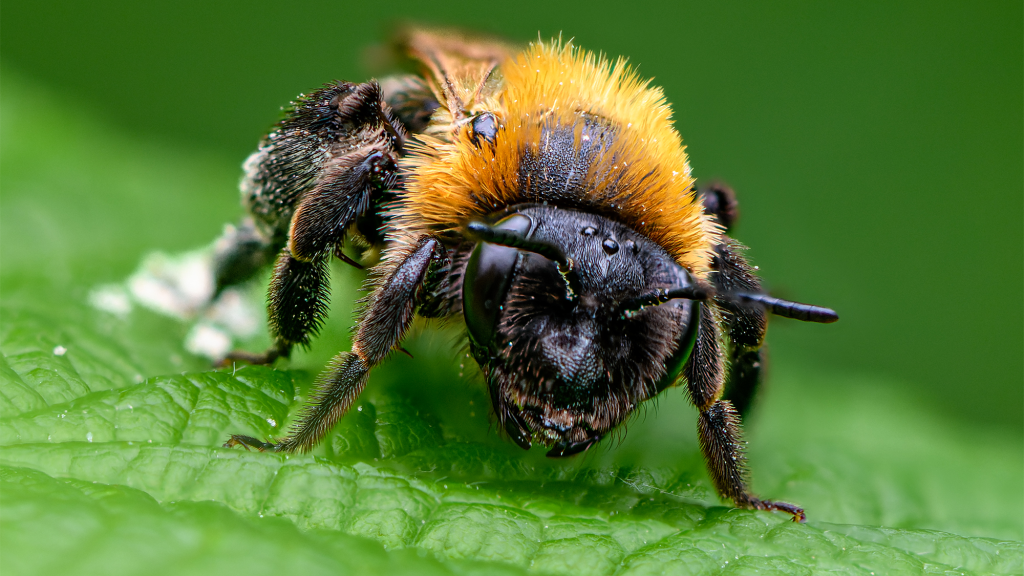It’s not uncommon to wonder how animals see the world around them—a dog as he sticks his head out the car window, or a horse sailing over a jump. But what about insects like bees, that can travel miles away from their hive? How do they know where they’re going, and then navigate back home?
It turns out that bees don’t just have two eyes—they have thousands.
“Bees’ eyes are very different from human eyes,” George Kolyfetis, a graduate student in the Department of Biology at the University of Konstanz, tells Popular Science. “They consist of thousands of smaller simple eyes, called ommatidia, and are thus referred to as complex or compound eyes.”
In a study recently published in Biology Letters, Kolyfetis and his colleagues investigated the ommatidia in honeybees and bumblebees. The bees’ dorsal ommatidia are on the top of their eyes and always pointed in the sky. They perceive differences in the polarization of light in the sky which humans can’t see. Bees and other insects use these patterns in the sky to navigate efficiently, Kolyfetis says.
Interestingly, the dorsal ommatidia’s light-detecting cells are less sensitive than other ommatidia, protecting bees from the sky’s blinding sunlight, but also hiding its details. Simply put, they’re specialized in perceiving large-scale polarization patterns.
[ Related: How do animals see the world? ]
The team found that, “some of these sky-facing ommatidia are connected in a way that whenever one is responding to a visual cue, its neighbours also receive that information,” Kolyfetis explains. “Our suggestion is that by ‘summing’ information across multiple ommatidia, the bee can smooth out disturbances (for example due to clouds) and get a more accurate representation of the skylight polarization pattern.”
In other words, this connection gives the bees a less-detailed but more accurate view of the sky’s polarized light.
Understanding how bee vision works could be applied to drones and self-driving cars. In the future, human-made bee eyes could even bolster autonomous navigation systems. According to the researchers, some scientists “are actively trying to mimic and optimize the properties of their visual systems to improve current technologies.”
Besides highlighting—once again—the potential for nature-inspired technologies, Kolyfetis points out that studying insect vision sheds light on the worldview of “the most abundant and successful group of animals that have ever lived.”

